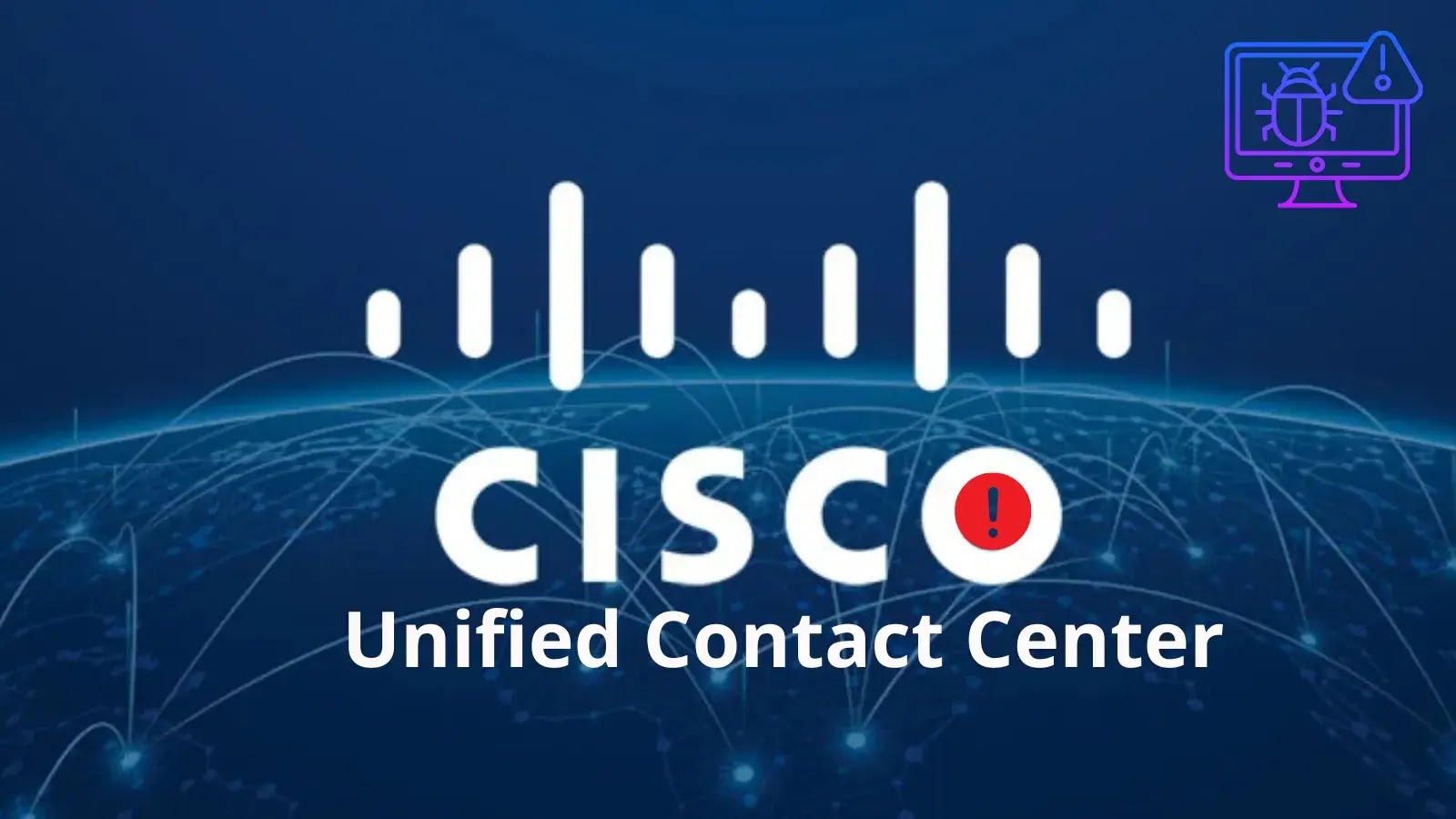
Cisco Unified Contact Center Express Vulnerabilities Let Remote Attacker Execute Malicious Code
Cisco Unified Contact Center Express Under Attack: Critical Vulnerabilities Expose Enterprises to Remote Code Execution
The integrity of customer service operations is paramount for any business. When the critical infrastructure supporting these operations falls prey to sophisticated cyber threats, the consequences can be severe. Cisco has recently unveiled a series of critical vulnerabilities within its Unified Contact Center Express (CCX) platform, presenting a significant risk to organizations globally. These flaws could allow unauthenticated remote attackers to execute arbitrary malicious code and escalate privileges, potentially compromising entire contact center deployments.
For IT professionals and cybersecurity teams overseeing Cisco CCX environments, understanding these vulnerabilities and implementing immediate remediation strategies is not just recommended, it’s essential. This analysis delves into the technical specifics of these weaknesses, outlining their potential impact and providing actionable steps to secure your systems.
Understanding the Threat: RCE and Authentication Bypass
At the heart of the disclosed issues are vulnerabilities impacting the Java Remote Method Invocation (RMI) process and authentication mechanisms within Cisco Unified CCX. The most critical of these, identified as CVE-2025-20354, opens the door for unauthenticated remote code execution (RCE).
- CVE-2025-20354: Unauthenticated Remote Code Execution (RCE)This critical vulnerability stems from improper handling of RMI messages. An attacker, without needing any credentials, can craft malicious RMI requests to the affected CCX server. Successful exploitation grants the attacker the ability to execute arbitrary code with elevated privileges, effectively taking control of the compromised system. The implications are staggering, ranging from data theft and system manipulation to complete disruption of contact center services.
- Authentication Bypass VulnerabilitiesBeyond RCE, other vulnerabilities within the authentication mechanisms could allow attackers to bypass security controls and gain unauthorized access. While specific CVEs for these bypasses are not detailed in the initial disclosure, their presence significantly amplifies the risk. An attacker gaining a foothold through an authentication bypass could then potentially leverage local privilege escalation techniques or further exploit system misconfigurations.
Impact on Contact Center Operations
The compromise of a Cisco Unified CCX deployment can have far-reaching consequences:
- Service Disruption: Attackers could shutdown critical services, leading to complete operational paralysis of the contact center.
- Data Breach: Customer records, sensitive business data, and call recordings could be exfiltrated, leading to significant privacy violations and regulatory fines.
- Reputational Damage: A major security incident can severely erode customer trust and damage the organization’s reputation.
- Financial Loss: Beyond immediate operational costs, financial losses can accrue from regulatory penalties, legal fees, and remediation efforts.
Affected Versions and Severity
Cisco typically provides a detailed list of affected product versions and their corresponding severity ratings for each vulnerability. It is imperative to consult the official Cisco security advisories for precise information regarding the specific versions of Unified CCX that are vulnerable. Enterprises running any version of Cisco Unified CCX should treat this advisory with the highest urgency and verify their current software versions against the published advisories.
For the primary RCE vulnerability, CVE-2025-20354, the critical severity rating underscores the immediate need for action.
Remediation Actions
Immediate and decisive action is required to mitigate the risks posed by these vulnerabilities. Cisco has released security updates to address these flaws. Organizations should prioritize the following:
- Apply Patches and Updates: The most crucial step is to apply the latest security patches and software updates released by Cisco. Continuously monitor Cisco’s official security advisories for all relevant updates.
- Network Segmentation: Implement strict network segmentation to isolate the Cisco Unified CCX environment from less trusted networks. This can limit the lateral movement of an attacker even if an initial compromise occurs.
- Restrict RMI Access: Configure firewalls and access control lists (ACLs) to restrict access to the RMI ports used by CCX servers to only trusted IP addresses and necessary management systems.
- Regular Audits and Monitoring: Continuously monitor logs for suspicious activity, unauthorized access attempts, and unusual resource utilization within the CCX environment.
- Principle of Least Privilege: Ensure that all accounts accessing the CCX system, whether human or service accounts, operate under the principle of least privilege.
- Incident Response Plan: Review and update your incident response plan to specifically address potential compromises of your contact center infrastructure.
Tools for Detection and Mitigation
While direct patching is the primary mitigation, several tools can aid in detection, scanning, and monitoring efforts.
| Tool Name | Purpose | Link |
|---|---|---|
| Cisco Security Advisories | Official source for vulnerability details and patches | https://tools.cisco.com/security/center/publicationListing.x |
| Vulnerability Scanners (e.g., Nessus, Qualys) | Automated scanning for known vulnerabilities, including configuration weaknesses | https://www.tenable.com/products/nessus |
| Network Intrusion Detection/Prevention Systems (NIDS/NIPS) | Monitoring network traffic for suspicious patterns and blocking malicious activity | (Vendor-specific, e.g., Cisco Firepower, Snort) |
| Security Information and Event Management (SIEM) | Centralized logging and analysis to detect anomalies and potential breaches | (Vendor-specific, e.g., Splunk, IBM QRadar) |
Conclusion
The disclosure of critical vulnerabilities in Cisco Unified Contact Center Express serves as a stark reminder of the persistent and evolving threat landscape facing modern enterprises. Unpatched systems represent a significant and unnecessary risk. By understanding these vulnerabilities, applying the recommended patches, and implementing robust security practices, organizations can effectively safeguard their critical contact center operations, protect sensitive data, and maintain customer trust in an increasingly interconnected world.





